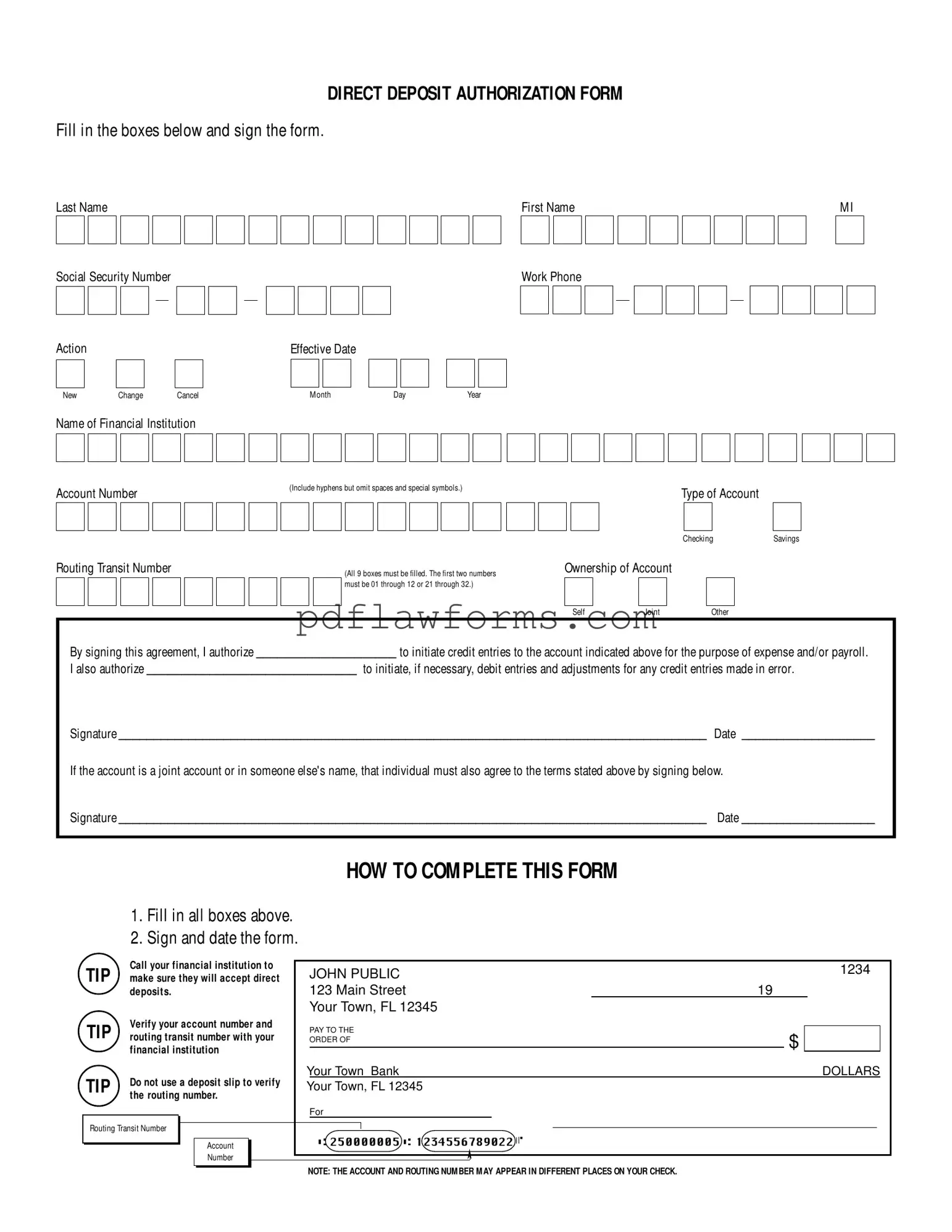For many individuals and businesses, the Generic Direct Deposit form serves as a crucial tool for managing financial transactions efficiently. This form allows employees and clients to authorize the direct deposit of funds into their bank accounts, eliminating the need for paper checks and reducing the risk of lost or stolen payments. Completing the form requires several key pieces of information, including the individual's name, Social Security number, and contact details. Additionally, it is essential to specify the financial institution where the funds will be deposited, along with the corresponding account number and routing transit number. Users must also indicate whether they are opening a new account, changing existing deposit information, or canceling a previous authorization. Importantly, the form includes a section for signatures, ensuring that both the account holder and any joint account holders consent to the terms outlined. By following the straightforward instructions provided, individuals can effectively set up or modify their direct deposit arrangements, streamlining their financial processes and enhancing overall convenience.
